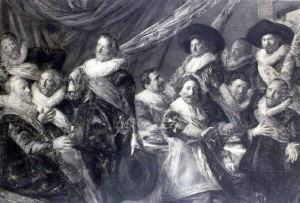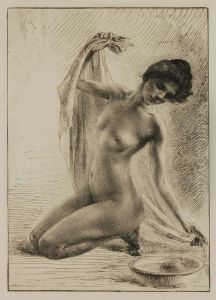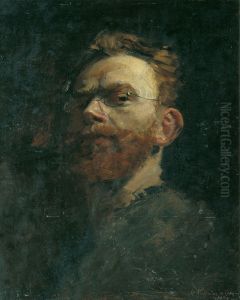Karl Kopping Paintings
Karl Köpping was a German artist and glassblower, born in 1861 in Berlin, Germany. He was primarily known for his delicate and innovative work with glass, creating intricate pieces that were celebrated for their artistic as well as technical mastery. Köpping’s work was part of a broader European movement that sought to revitalize the applied arts in the face of industrial mass production, which many artists of the time felt was leading to a decline in the quality and individuality of decorative objects.
Köpping's early life and education contributed significantly to his development as an artist. He initially trained as a painter before discovering his passion for glassblowing. His work with glass began in the 1880s, and he quickly established himself as an innovator in the field. Köpping was influenced by the natural world and often incorporated organic forms into his glass pieces. His creations were characterized by their fluid shapes and the impression of movement, as though the objects were alive. He pioneered techniques that allowed him to create extremely thin and delicate forms, which were often compared to soap bubbles and were admired for their translucency and iridescent colors.
Despite his success, Karl Köpping's life was also marked by tragedy. His only son died at a young age, a loss that deeply affected him. Yet, he continued to dedicate himself to his craft, and his work became well-known across Europe, particularly in artistic circles that valued craftsmanship and artistry over industrial manufacturing.
Karl Köpping died in 1936, leaving behind a legacy of artistic achievement that has continued to influence glass artists. His work is considered a high point in the Art Nouveau movement, and his pieces are now highly prized by collectors and museums. They can be found in many prestigious collections, including the Victoria and Albert Museum in London and the Corning Museum of Glass in New York.


